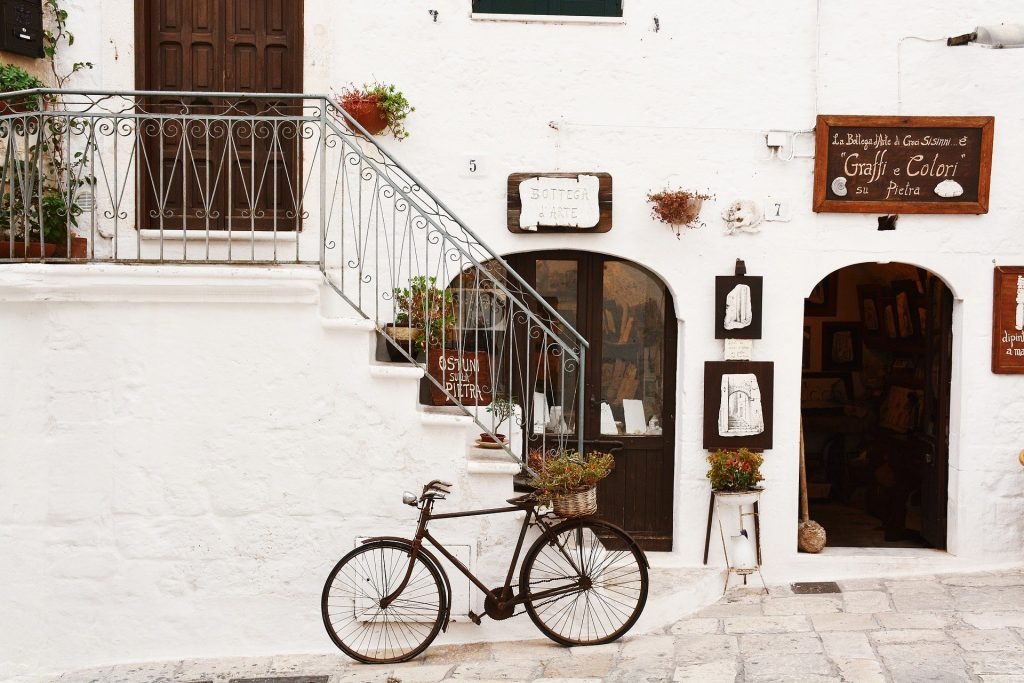
An Introduction to City Bikes
So you’ve been wondering, “What is a city bike” and rightly so!
As a cyclist living in an urban environment, I know how confusing it can be to find a bike suitable for a range of different cycling adventures.
So what makes the city bike so suited for navigating through the urban sprawl, and what are city bikes suitable for?
Keep reading, and by the end of this short article, you’ll be a city bike expert!
What is a City Bike?
A city bike, sometimes called a utility bike, is a type of bike used predominantly for trips in urban areas.
City bikes are built with comfort and practicality in mind and are designed to allow the rider to sit upright rather than bent forward, like on road bikes.
Technically speaking, many different types of bike classify as a city bike. Hybrid bikes, comfort bikes and some fixed gear bikes are all examples of bikes that could fall into the city bike category.
Most city bikes use fewer gears than road or mountain bikes and often utilise features such as step-through frames, chain guards, and baskets or panniers.
There are plenty of accessories that you can use to make riding your city bike much more enjoyable.
I’ll cover these later in the article.
What is a City Bike Used For?
A city bike is designed to be used as a utilitarian means of transportation rather than for athletic pursuits.
City bikes are designed to require minimal maintenance, efficiently get the rider from point A to point B, and to be easy to control whilst cycling!
Whilst city bikes are predominantly designed for riding on paved roads and asphalt surfaces. They’re more than suitable for riding gentle bicycle trails & paths or for peaceful rides in nature with friends!

Ultimately, if you’re looking for a cleaner, greener way of getting around town, city bikes are a great place to start.
History of City Bikes
Although we can trace city bikes back to the late 1800s in Paris, they didn’t become widely popular until after World War II, when it became common to add a small motor to utility bikes, especially in Western Europe. You can read more about motorized bikes here.
Most people couldn’t afford motorbikes or cars, so creating a motorised city bike was a great alternative. Historically, city bikes have been used for commuting, for postal services, by couriers and paper delivery boys, to shop, and for leisure.
How Have City Bikes Progressed Over the Years?

Over the years, as bicycles have seen improvements made to their components, city bikes have followed suit.
Electric city bikes, improved suspension systems, hub brakes, and rear racks have become common sights on modern city bikes.
These mechanical changes allow the city bike to maintain its aim of being a comfortable, hassle-free way of navigating the concrete jungles we live in.
The bike pictured above is similar to traditional roadster bikes that were used by postal services and the military during world war two.
Who Should Use a City Bike?
People who live in urban areas, who want to travel without stress or fatigue are ideal candidates for city bikes.
If comfortably travelling to your destination is a priority for you rather than speed, or off-roading capability, a city bike will be a great choice.
If you don’t take your cycling too seriously and don’t wish to pursue it in a competitive environment, a city bike will serve you well.
Who Shouldn't Use a City Bike?
If you suffer from significant health issues, it’s probably best to speak with a doctor or another medical professional before taking up cycling.
You may also decide to choose a different type of bike if you live in an area with steep hills. If your local area or commute to work will entail climbing long hills, a hybrid bike will definitely be more suitable for you!
Pros & Cons of Using a City Bike
| Pros | Cons |
|---|---|
| City bikes provide a comfortable, upright riding position | Your average city bike can be quite heavy |
| City bikes demand minimal maintenance | Climbing hills on a city bike is challenging |
| City bikes are suitable for new cyclists |
City bikes aren't suitable for off-road cycling apart from gentle bike trails |
| City bikes are less desirable to bike thieves | City bikes are slower than most other bike types |
| City bikes come in a wide range of shapes and sizes | |
| City bikes tend to be more affordable than other bike types | |
| City bikes cater for cyclists with back problems |
Environmental Impact of Using a City Bike
The environmental impact of using a city bike is an incredibly positive one since it reduces emissions not just from motor vehicles, but also public transportation.
Also, the use of city bikes to deliver packages and other items locally cuts down even more on the total amount of emissions in a city.
Although city bikes have fallen in and out of fashion, they continue to have a steady cult following within the cycle courier community, which traces back to their utilitarian roots.
Does a City Bike require anything to keep Functioning?
All bicycles demand maintenance, but city bikes are designed to keep the required work to a minimum by eliminating the use of complex parts and components.
City bikes have minimal gears and often use internal hub gears, which are low maintenance as the mechanical components are housed directly within the hub of your wheel.
Single-speed or fixed gear city bikes are about as minimalistic as they come and are extremely easy to maintain.

Some of the things that may require maintenance on your city bike include checking your tire pressure frequently, testing your brakes to ensure they’re engaging properly on your braking surfaces, and keeping your drivetrain clean and lubricated.
You will find that when compared to performance bikes, city bikes are straightforward to care for.
One of the main selling points of city bikes is that they require much less maintenance than road bikes or mountain bikes.
What to Wear When Riding a City Bike
City bikes were designed to keep your clothes clean and are meant to be ridden wearing your everyday work or casual clothes.
It’s a good idea to wear reflective clothing, especially when riding in the dark. By doing so, you are more visible to other vehicles and people on the road.
People who wear long dresses or skirts can make use of city bikes by attaching a skirt guard to their bike. Equally, if you wear baggy trousers, tuck them into your socks whilst riding to avoid snagging!
I’ll cover some similarly helpful accessories you can add to your city bike below.
What Accessories are Recommended When Using a City Bike?

City bikes have a wide range of fashionable and practical accessories to work with. From locks and tools to lights, baskets and child bike seats.
As with any bike, it is recommended that you wear a helmet and as much safety gear as possible.
Many people like having a powerful bell or horn on a city bike. These will allow you to alert other road users of your presence, increasing the safety of your travels. In some
Mudguards (fenders), chain guards, and skirt guards are also fantastic additional accessories that’ll ensure your clothes stay clean and fresh whilst you ride.
As always, be sure to wear a helmet!
Summary - What Is a City Bike
Hopefully, you now understand a little more about city bikes and who these sturdy, comfortable bikes are suitable for.
If you do have any questions, leave a comment down below, and I’ll get back to you right away!
If you’re considering purchasing a new bike, don’t forget to use a suitable bike lock. Check out my review of the best cheap bike locks or the best locks on the market to land yourself a top-quality lock!
As always, lock it or lose it.
Ciao for now













